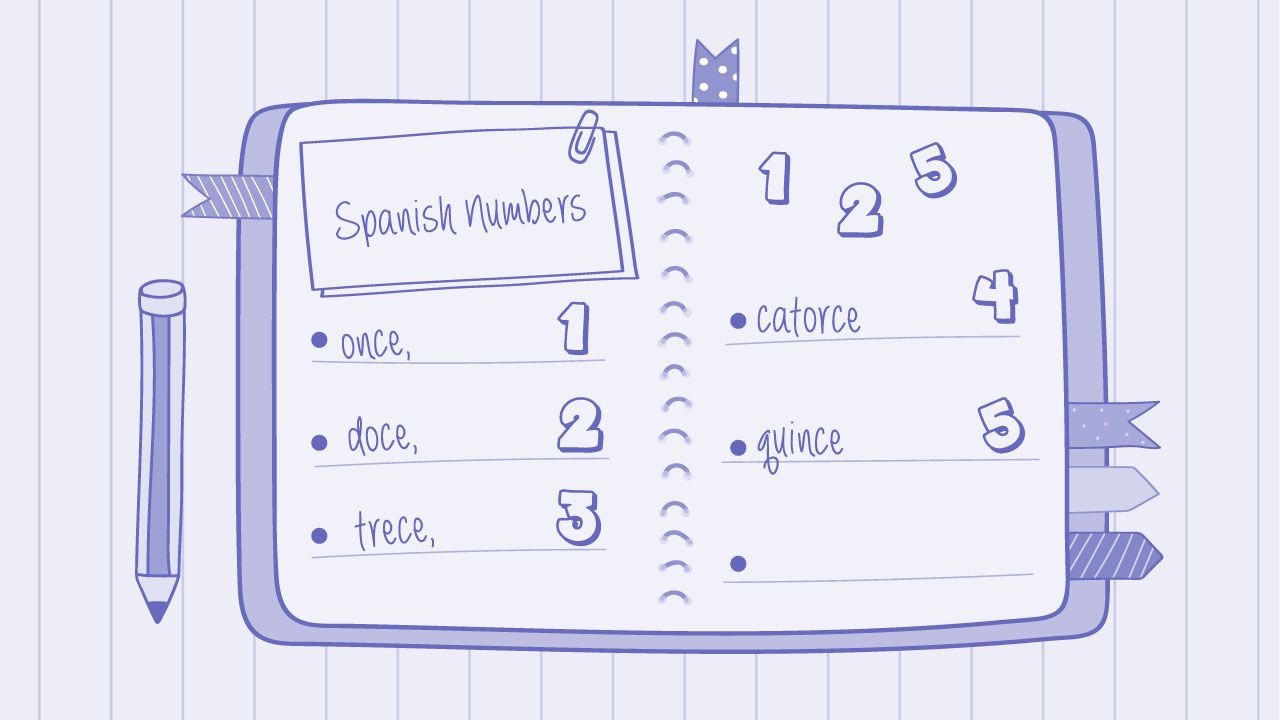
It's no secret that Spanish is one of the most popular languages in the world. In fact, it's estimated that there are more than 483 million native Spanish speakers from 20 Spanish-speaking countries worldwide. If you're looking to learn a new language, Spanish is a great option for you.
However, one of the biggest challenges you can face when you only start learning Spanish is mastering numbers. While counting in English is relatively simple, Spanish pronunciation and spelling can be tricky.
But don't worry – in this brief guide, we will cover the basics of counting in Spanish, as well as how to build, spell, and pronounce Spanish numbers greater than 10. Vamos!
The Basics of Counting in Spanish
Let's start with the basics. In Spanish, there are two types of numbers: cardinal numbers (los números cardinales) and ordinal numbers (los números ordinales). Cardinal numbers are used to count things, people, animals, and other objects, while ordinal numbers are used to express rank or position or put those things in order.
Cardinal Spanish Numbers
You need to learn Spanish cardinal numbers to be able to count objects, people, animals, etc. Here are some examples of cardinal numbers in Spanish:
| 1 | uno |
| 2 | dos |
| 3 | tres |
| 4 | cuatro |
| 5 | cinco |
| 6 | seis |
| 7 | siete |
| 8 | ocho |
| 9 | nueve |
| 10 | diez |
When counting from 11 to 19 in Spanish, only the numbers from 11 to 15 will appear as completely new Spanish words. Spanish numbers from 16 to 19 follow a pattern – they use the word for 10 (diez) as a base, followed by the appropriate number. For example:
| 11 | once |
| 12 | doce |
| 13 | trece |
| 14 | catorce |
| 15 | quince |
| 16 | dieciseis |
| 17 | diecisiete |
| 18 | dieciocho |
| 19 | diecinueve |
As you can probably tell, the Spanish numbers 11 to19 are a bit irregular. Once you get to 20, the pattern becomes simpler. Take a look:
| 20 | veinte |
| 21 | veintiuno |
| 22 | veintidós |
| 23 | veintitres |
| 24 | veinticuatro |
| 25 | veinticinco |
As you can see, the word for 20 (veinte) is always used as a base, followed by the appropriate number. Note that you need to change the last e into i in the word viente.

To count from 30 to100 in Spanish, you need to learn the words for higher multiples of ten, as the Spanish numbers 30 to 90 are also irregular. Here is how to spell them:
| 30 | treinta |
| 40 | cuarenta |
| 50 | cincuenta |
| 60 | sesenta |
| 70 | setenta |
| 80 | ochenta |
| 90 | noventa |
| 100 | cien |
When it comes to forming other “tens,” it’s even easier. Just take the “tens” number, and add the conjunction y and the “unit” number you need. For example:
| 37 | treinta y siete |
| 41 | cuarenta y uno |
| 65 | sesenta y cinco |
| 56 | cincuenta y seis |
| 78 | setenta y ocho |
| 99 | noventa y nueve |

How to Build and Write Bigger Spanish Numbers
If you want to build numbers higher than one hundred, you need to change the word cien to ciento and then add the tens and units without using any conjunctions. Here’s how:
| 101 | ciento uno |
| 107 | ciento siete |
| 113 | ciento trece |
If you want to write higher multiples of 100, you need to use the plural form cientos. The only exception is the word for 500 – quinientos.
| 200 | doscientos |
| 300 | trescientos |
| 400 | cuatrocientos |
| 500 | quinientos |
| 600 | seiscientos |
| 700 | setecientos |
| 800 | ochocientos |
| 900 | novecientos |
Once you get to 1000, the pattern becomes more regular. For example:
| 1,000 | mil |
| 2,000 | dos mil |
| 3,000 | tres mil |
Note that the word mil never changes to a plural form. Un millón, on the other hand, does have plural forms. For example:
| 1,000,000 | un millón |
| 3,000,000 | tres millones |
| 15,000,000 | quince millone |
You also need to be careful with the Spanish word billón, which is used to refer to one million millions, which equals a trillion when written in English (12 zeros). However, a billion in the English system is one thousand millions (9 zeros), or mil millones in Spanish.
- Spanish system: un billón - 1,000,000,000,000
- English system: one billion - 1,000,000,000
Now that you know how to write different numbers in Spanish, you can build bigger numbers and spell them properly. Here are a few breakdowns of longer Spanish numbers:
| 732 | setecientos treinta y dos |
| 2,195 | dos mil ciento noventa y cinco |
| 483,382 | cuatrocientos ochenta y tres mil trescientos ochenta y dos |
| 6,492,000 | seis millones cuatrocientos noventa y dos mil |
Ordinal Spanish Numbers
Ordinal Spanish numbers help us express rank, or an object’s position in relation to others. They also help put things and ideas in order. The most common Spanish ordinal numbers are from 1 to 10, so here they are:
| first | primero/es |
| second | segundo |
| third | tercero |
| fourth | cuarto |
| fifth | quinto |
| sixth | sexto |
| seventh | séptimo |
| eighth | octavo |
| ninth | noveno |
| tenth | décimo |
For larger numbers, it’s common to simply use cardinal numbers in spoken Spanish or construct a sentence in a way that using ordinal numbers won’t be necessary. Typically, ordinal numbers are considered formal.
However, although ordinal numbers aren’t ordinarily used after 10, it’s still worth taking a look at them so that you can recognize them when they do appear.
As a general rule of thumb, we use a combination of decimo + ordinal number 1 to 9 to form ordinal numbers from 11 to 19, e.g., decimotercero (thirteenth).
For numbers from 20 to 100, we use the ordinal number ending in -gésimo or -agésimo + the unique singular ordinal number 1 to 9, as in octogésimo primero (81st).

Genders of Spanish Numbers
In Spanish, there is only one number that has both masculine and feminine forms, and that is the number one (uno/una). All other numbers have only masculine forms.
When you count objects in Spanish using “one” word, you have to pay attention to whether the noun it refers to is masculine or feminine. The number will agree with the gender of the noun it describes. However, keep in mind that it’s applicable both when you are talking about one thing, or are using a number that ends in 1, e.g., 31 – treinta y uno.
This way, in front of a feminine word, the Spanish number one - uno - becomes una, while you need to cut off the o and use un instead before a masculine noun. For example:
- Masculine: un coche - one car
- Feminine: una ventana - one window
Another thing to note is that you should keep the uno form when you’re counting the masculine nouns, but you don’t mention their name. Here’s an example:
Native
Translation
¿Cuántos pasteles tienes? Solo uno.
How many cakes do you have? Just one.
The great news is that you don't have to worry about this with any other numbers in Spanish, as all other numbers come in a masculine form.
The Bottom Line

Mastering Spanish numbers can seem daunting at first, but with a little practice you'll be able to count and spell them out like a pro. In this article, we’ve covered the basics of cardinal and ordinal Spanish numbers – how to build and write them. We’ve also given a few tips on how to use these numbers correctly when speaking or writing in Spanish.
With a little practice, you should be able to master counting in this beautiful language, and before you know it, you'll be counting in Spanish like a native speaker! You should also download our Langster app to diversify your language learning process and get more practice with the numbers in Spanish. Good luck!









